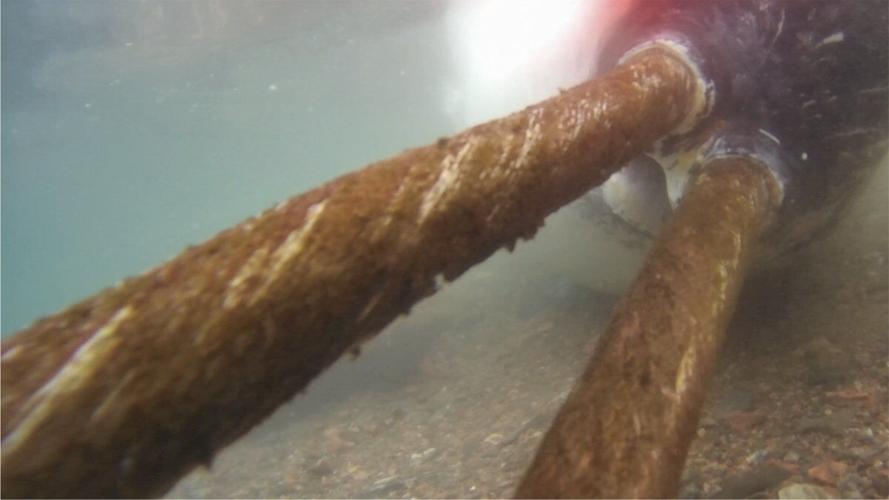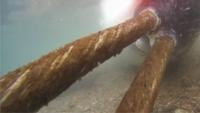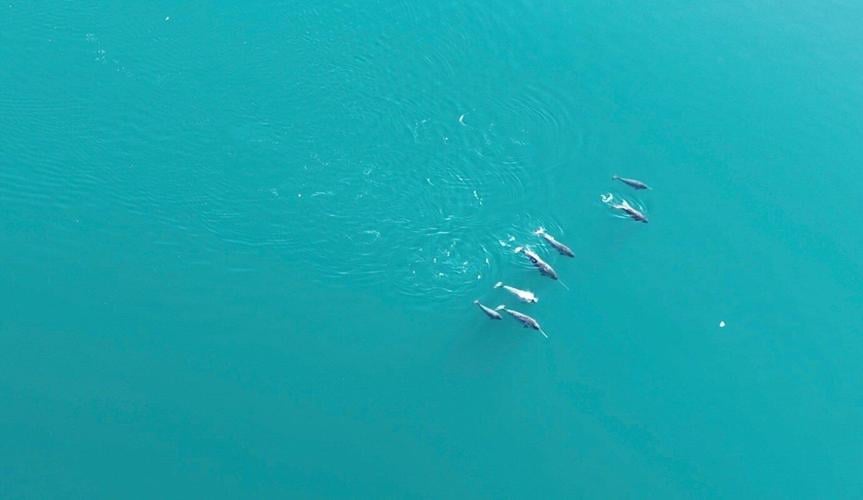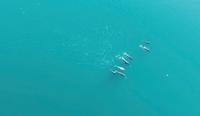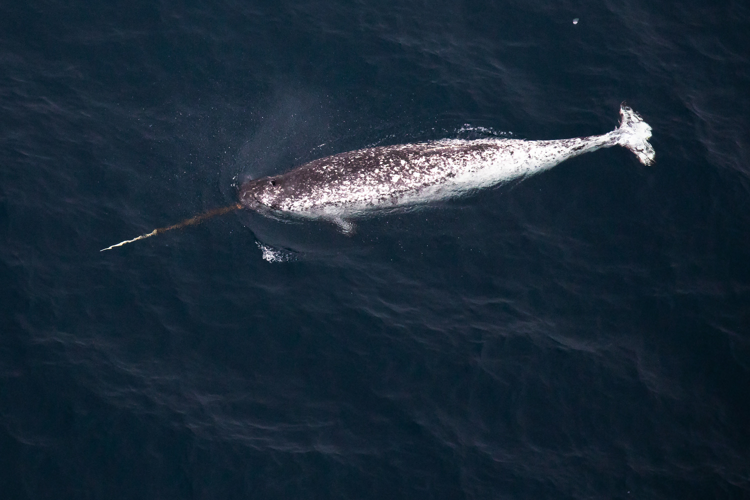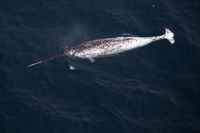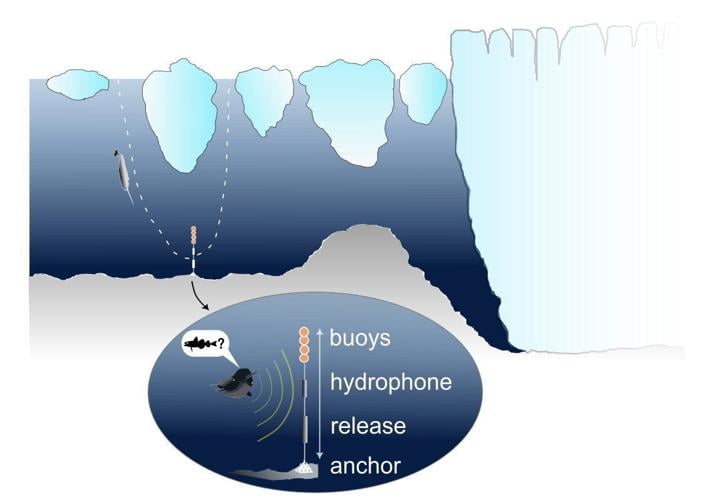
A double-tusked narwhal harvested in the study area by Inughuit hunters and used for analysis, Inglefield Bredning Fjord, Northwest Greenland. (E. A. Podolskiy, August 2023 via SWNS)
By Stephen Beech
Narwhals have been caught on camera colliding with deep ocean monitors.
The mysterious toothed whale species native to the Arctic has been involved in "hundreds" of incidents with underwater recording devices.
The narwhals may be mistaking the recording equipment for cod they love to feed on, say scientists.
Underwater passive acoustic recording is vital for researchers to monitor and study marine animals in their natural environment with minimal disturbance.
But the latest findings, published in the journal Communications Biology, suggest passive monitoring is not as non-invasive as previously assumed.
Research leader Associate Professor Evgeny Podolskiy said: "Using passive acoustic monitoring to detect acoustically active animals helps to census biodiversity, understand animal behaviour and habitat use, and reduce the negative impacts of human-made noise.
“For these reasons, scientists increasingly rely on passive acoustic monitoring to answer fundamental ecological questions and manage conservation.”

A pod of narwhals is swimming at Inglefield Bredning Fjord, Northwest Greenland. Narwhals have been caught on camera colliding with deep ocean monitors. (M. Ogawa, August 2024 via SWNS)
But the narwhals seem to have developed a strong interest in underwater passive recording devices.
Podolskiy, of the Arctic Research Center at Hokkaido University in Japan, said that over the course of a two-year study in Greenland, narwhals "repeatedly" approached, scanned, and hit deep-sea hydrophones.
He and his colleagues from Hokkaido University and the National Institute of Polar Research in Japan analyzed data from Inglefield Bredning Fjord in northwest Greenland.
They collaborated with local Inughuit hunters to deploy and retrieve three underwater acoustic recording devices to depths ranging from 190 metres (620 ft) to 400 metres (1,310 ft).
The devices recorded sounds between August 2022 and May 2024, including those of narwhals repeatedly knocking and rubbing against them, of echolocation clicks, and of the foraging "buzz" of narwhals, which got louder as they approached the devices.
Altogether, there were 247 incidents of narwhal hits in more than 4,000 hours of audio records.

Wikimedia Commons
The hits were detected on the two deepest recording devices located 25 km (15.5 miles) apart.
Given that the recordings were not continuous and had around 15-minute pauses, the researchers estimated that the true number of narwhal hits on the two devices could have been as many as 484 to 613 over the two months of narwhal presence in the area.
That worked out at an average of 10 to 11 hits a day, mostly during daytime hours.
Podolskiy said: “Our results suggest that narwhals repeatedly dived to visit the moorings out of playful curiosity or, more likely, due to confusion with potential prey."
The study included an analysis of the stomach contents of 16 narwhals, caught in the same area in August 2022 and 2023 by Inughuit hunters as part of their subsistence harvest.
The analysis revealed that the narwhal's diet was primarily composed of cod, with smaller amounts of shrimp and squid.
The team also found stones in the stomachs.
The researchers believe that the narwhals might confuse the recording devices with cod or halibut near the seafloor.
But they noted that narwhals might be able to distinguish "fine" differences in texture and density through echolocation, as other toothed whales.
They also noted that the devices sometimes picked up a prolonged "rubbing" sound after the foraging buzz and hit, which they suggested could be the sound of the animal’s skin sliding past the microphone.

Sketch of a seafloor mooring in a glacial fjord at Inglefield Bredning, Northwest Greenland. Narwhals have been caught on camera colliding with deep ocean monitors. (E. A. Podolskiy, August 2023 via SWNS)
Podolskiy said: “Though little is known about moulting in narwhals, mooring rubbing could be the associated behaviour.
“Inughuit hunters were not surprised by the discovered interaction: they are familiar with narwhal entanglement in unattended gear.
"They also believe that narwhals like to play and are told so by their parents, and joked that narwhals might scratch their backs, like cats.
"While this is possible, and other arctic whales are known to rub their bodies over rocks, it is unlikely due to the high energetic costs of deep diving."
The researchers say their findings raise questions about whether passive acoustic monitoring is actually as non-invasive as it’s thought to be.
The study shows that narwhals are not deterred but rather attracted to scientific moorings, showing that the presence of these artificial devices can affect the behaviour of this species.
The researchers suggest that short mooring lines might be a simple precaution to minimise inadvertent effects of observations indispensable for conservation and management.
Podolskiy added: “Understanding animals’ interaction with industrial and scientific infrastructure can help reduce impacts on wild animals and improve our ability to implement and interpret autonomous field observations."



